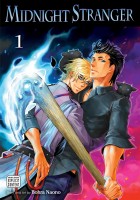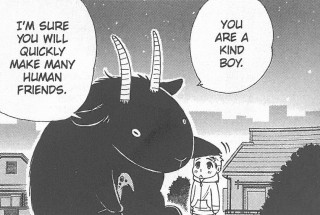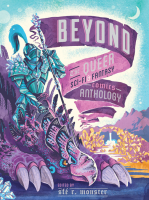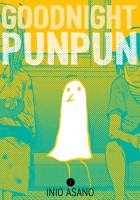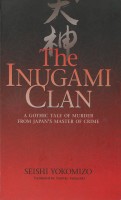 Author: Seishi Yokomizo
Author: Seishi Yokomizo
Translator: Yumiko Yamazaki
U.S. publisher: ICG Muse
ISBN: 9784925080767
Released: July 2003
Original release: 1951
The Inugami Clan is one of Seishi Yokomizo’s most well-known works and is currently the only novel by the popular and prolific author of mystery and detective fiction to have been translated into English. Yokomizo completed The Inugami Clan in 1951. Yumiko Yamazaki’s English translation was published twice—first by ICG Muse 2003 and then again by Stone Bridge Press in 2007—but sadly both editions have since gone out of print. The Inugami Clan is one of many stories by Yokomizo which features the eccentric private investigator Kosuke Kindaichi, perhaps the author’s most notable, popular, and memorable character. (It’s interesting to note that the manga series Kindaichi Case Files is in part inspired by Yokomizo’s detective Kindaichi.) Like a number of Yokomizo’s other works, The Inugami Clan served as the basis for a live-action adaptation—director Kon Ichikawa’s award-winning film The Inugamis was released in 1976 and then remade again in 2006.
Sahei Inugami began his life as a poor and homeless orphan. He drifted from place to place until, at the age of seventeen, he was taken in by Daini Nonomiya, a Shinto priest at a shrine near Lake Nasu, and his wife. But by the end of his life, Sahei had become a wealthy and respected businessman, as well as the head of a dysfunctional family with very little love lost among its members. Sahei died in the mid-1940s, leaving behind a last will and testament that triggered a series of ghastly murders. One after another, people closely associated with Sahei began dying and the number of his potential heirs dwindled. Because of the strange and stained circumstances surrounding Sahei’s demise a private detective, Kosuke Kindaichi, was called to Nasu to investigate. However, his presence does little to stop the unfolding calamity until he delves more deeply into the closely kept secrets and hidden pasts of Sahei and the rest of the Inugamis.
I found The Inugami Clan to be an extraordinarily satisfying mystery. From the very beginning of the novel, Yokomizo provides the hints and clues needed to solve case, giving readers the opportunity to come to their own conclusions should they choose. There are many surprises as the story twists and turns, but everything falls beautifully into place by the end in a way that, although unexpected and arguably unbelievable, feels natural rather than forced. The already troubled relationships among the various members of the Inugami family along with the execution of Sahei’s peculiar will present numerous scenarios in which any one of the Inugamis could have a convincing motive to carry out the murders as well as the opportunity to act upon their ill intentions. Coincidences and deliberate actions come together to form a deadly situation where very few of the Inugamis can claim to be completely innocent. And so it is left to Kindaichi, and by proxy the reader, to piece together the facts and untangle an elaborate knot of passion, loyalty, and betrayal in order to deduce the culprit’s identity.
The Inugami Clan works so well as a novel and as a mystery because of Yokomizo’s close attention to the intricacies and complexities of human and familial relationships—people don’t always behave logically or act rationally when the lives and happiness of the ones who they love are at stake. As Kindaichi investigates the Inugami family and the murders it is revealed that everything that has happened can ultimately be traced back to the homosexual relationship rumored to have existed between Sahei and Daini; their closeness and intimacy has grave, unintended consequences decades later. A subtle thread of eroticism pervades The Inugami Clan, love and sexuality being a key part of the plot without necessarily being obvious. That combined with the dramatic scandals and dysfunction of the Inugamis as well as the bizarre and grotesque nature of the murders makes The Ingumai Clan both thrilling and engaging if at times somewhat outrageous. However, the novel’s popularity is completely understandable; I only wish that more of Yokomizo’s work would be translated.




